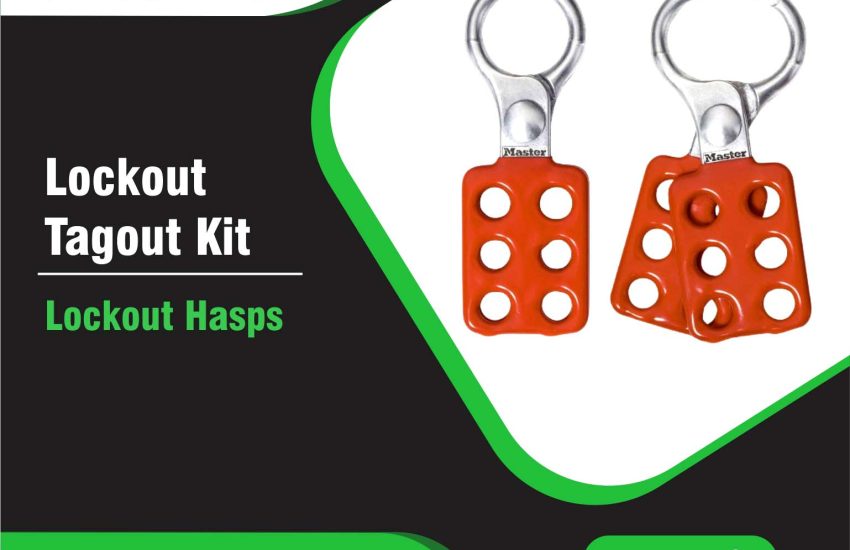In industrial environments, worker safety is essential. Lockout hasps are key components of lockout/tagout (LOTO) procedures. These devices help isolate energy sources and prevent accidental machine startups during maintenance or repairs. This article provides an overview of lockout hasps, highlighting their specifications, features, benefits, and tips for choosing the best product to enhance workplace safety. We’ll also include SEO keywords to help you find the right lockout hasp for your needs.
What Is a Lockout Hasp?
A lockout hasp is a safety device used in lockout/tagout procedures. It isolates energy sources and ensures that equipment cannot be operated while under maintenance. Workers can apply their locks to a single energy isolation point, preventing anyone from accidentally starting the machinery while others are still working. By controlling the energy flow, lockout hasps help reduce the risk of injuries and maintain compliance with safety regulations.
Key Specifications of Lockout Hasps
When selecting a lockout hasp, consider these key specifications to ensure safety and durability.
1. Material Composition
- Steel: The most common material for lockout hasps. Steel offers strength and durability.
- Aluminum: Lightweight and resistant to corrosion, ideal for less demanding environments.
- Stainless Steel: Highly resistant to corrosion, perfect for outdoor or harsh environments.
2. Size and Shackle Capacity
- Shackle Size: Lockout hasps accommodate different lock sizes. Most can fit shackles ranging from 1/8 inch to 1/4 inch in diameter.
- Number of Lock Holes: Most lockout hasps allow between 2 to 6 locks, making them suitable for group lockout situations.
- Shackle Opening: A larger opening increases flexibility, allowing for more locks.
3. Lockout Hasp Design
- Single and Multi-Lockout Hasps: A single hasp fits one lock, while a multi-lockout hasp allows several locks, ideal for team-based lockout procedures.
- Non-Conductive Design: Some lockout hasps are made from non-conductive materials, offering protection in environments dealing with electrical systems.
4. Durability and Corrosion Resistance
- Corrosion-Resistant: Corrosion-resistant lockout hasps withstand harsh conditions such as chemicals and moisture.
- Weatherproof: Weatherproof hasps ensure functionality in extreme temperatures or outdoor conditions.
5. Tamper-Proof Features
- Tamper-Evident: Some hasps feature designs that prevent unauthorized removal or alteration.
- Clear Markings: Many models include color-coded tags or markings to indicate who is responsible for the lockout.
6. Compliance with Safety Standards
Lockout hasps must comply with safety regulations such as OSHA (Occupational Safety and Health Administration) and ANSI (American National Standards Institute) to ensure they meet the requirements of workplace lockout/tagout programs.
Benefits of Using Lockout Hasps
1. Increased Worker Safety
Lockout hasps are designed to enhance worker safety by ensuring only authorized personnel can control machinery. By preventing accidental startups and energy releases, these devices significantly reduce the risk of injury.
2. Compliance with Safety Regulations
Using lockout hasps helps companies comply with OSHA and ANSI regulations. These standards mandate that employers implement effective procedures to safeguard workers from hazardous energy during maintenance and repair work.
3. Multi-User Safety
Lockout hasps are ideal for group lockout situations. They allow multiple workers to apply their individual locks to a single energy isolation point, ensuring that no one can accidentally start the machine while others are still working.
4. Durability and Reliability
High-quality lockout hasps are designed for long-term use, even in challenging conditions. Materials such as stainless steel and hardened steel provide excellent resistance to wear and corrosion, ensuring reliable performance for years.
5. Simple and Easy to Use
Lockout hasps are user-friendly and require minimal training. Once in place, workers can quickly lock out energy sources and carry out maintenance tasks safely.
6. Versatility
Lockout hasps come in various designs to suit different applications. From single-lockout hasps for simpler tasks to multi-lockout hasps for complex procedures, these tools are adaptable across many industries, including manufacturing, energy, and construction.
How to Choose the Right Lockout Hasp
1. Assess the Number of Users
If multiple workers will be involved in the lockout procedure, choose a multi-lockout hasp. These devices typically accommodate between 2 to 6 locks, allowing each worker to secure the equipment individually. For fewer workers, a single-lockout hasp may be sufficient.
2. Check the Environmental Conditions
Consider the environment where the lockout hasp will be used. For wet, corrosive, or outdoor settings, choose a corrosion-resistant or weatherproof model, often made from stainless steel or aluminum.
3. Verify Compliance
Make sure the lockout hasp meets relevant OSHA and ANSI standards. These certifications ensure the device adheres to safety regulations, which is crucial in high-risk industries.
4. Consider Durability
For high-use environments, select a heavy-duty steel or hardened steel lockout hasp. These materials offer extra durability, ensuring the lockout device remains functional even in challenging conditions.
5. Ensure Ease of Use
Lockout hasps should be easy to operate, even for workers wearing gloves or working in tight spaces. Choose models with simple, user-friendly designs that promote efficiency.
Conclusion
Lockout hasps are critical for ensuring workplace safety and regulatory compliance. By understanding the specifications, benefits, and features of lockout hasps, you can select the right device to secure machinery and protect your workers. Whether you need a corrosion-resistant, multi-lockout, or heavy-duty hasp, there are numerous options to suit your facility’s needs. Always prioritize safety, durability, and compliance when choosing lockout hasps to safeguard your workers during maintenance and repair tasks.


